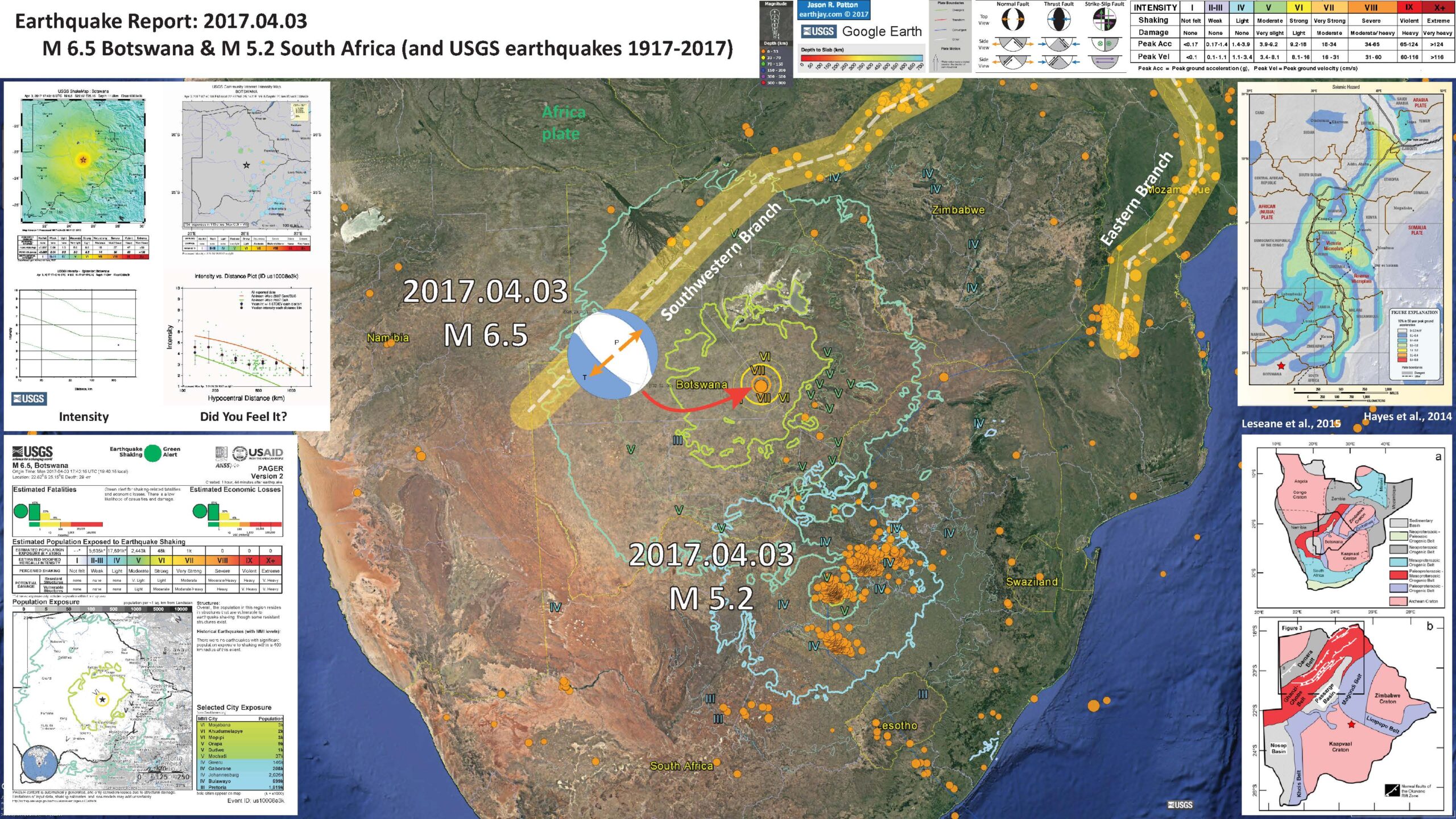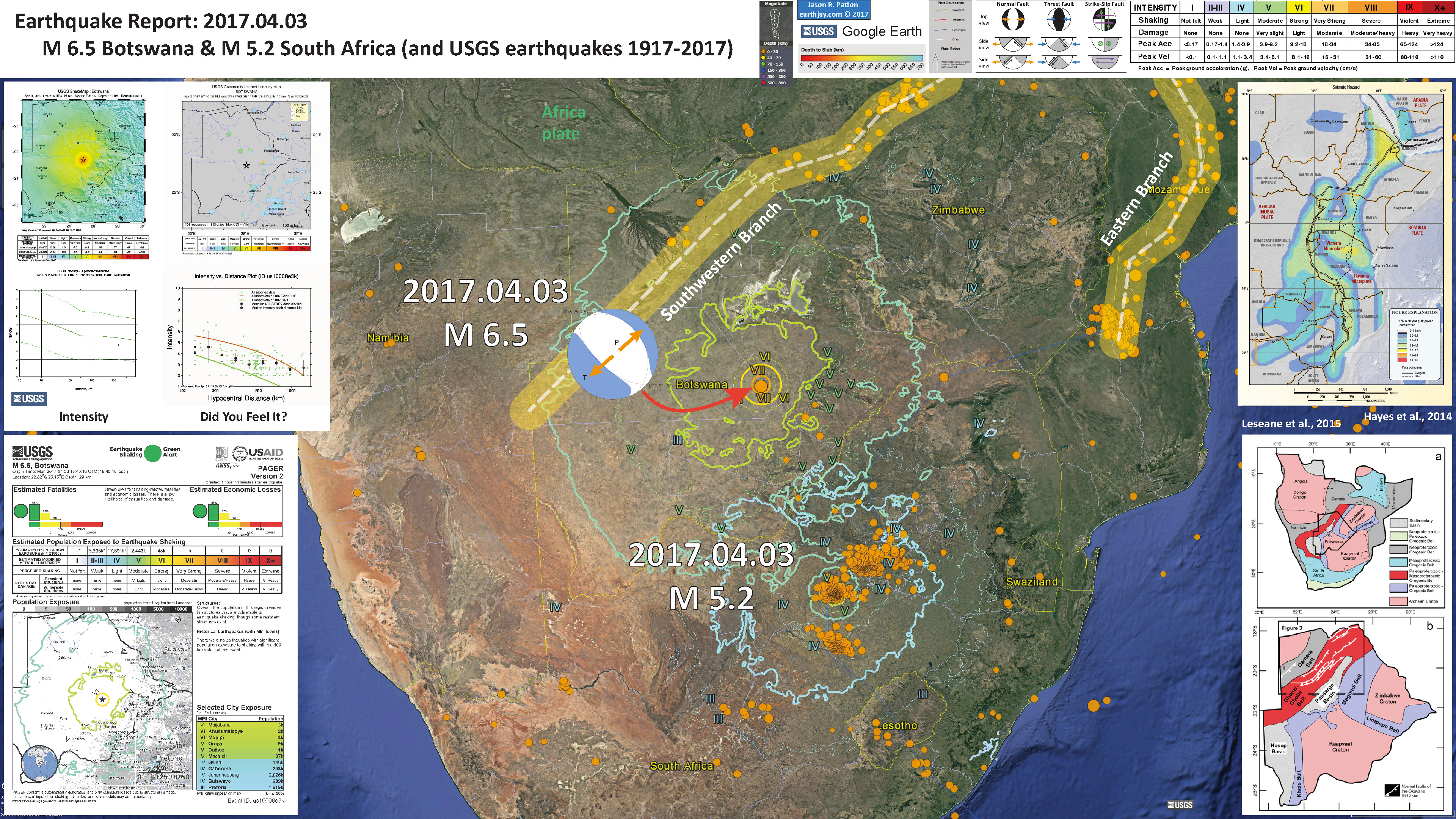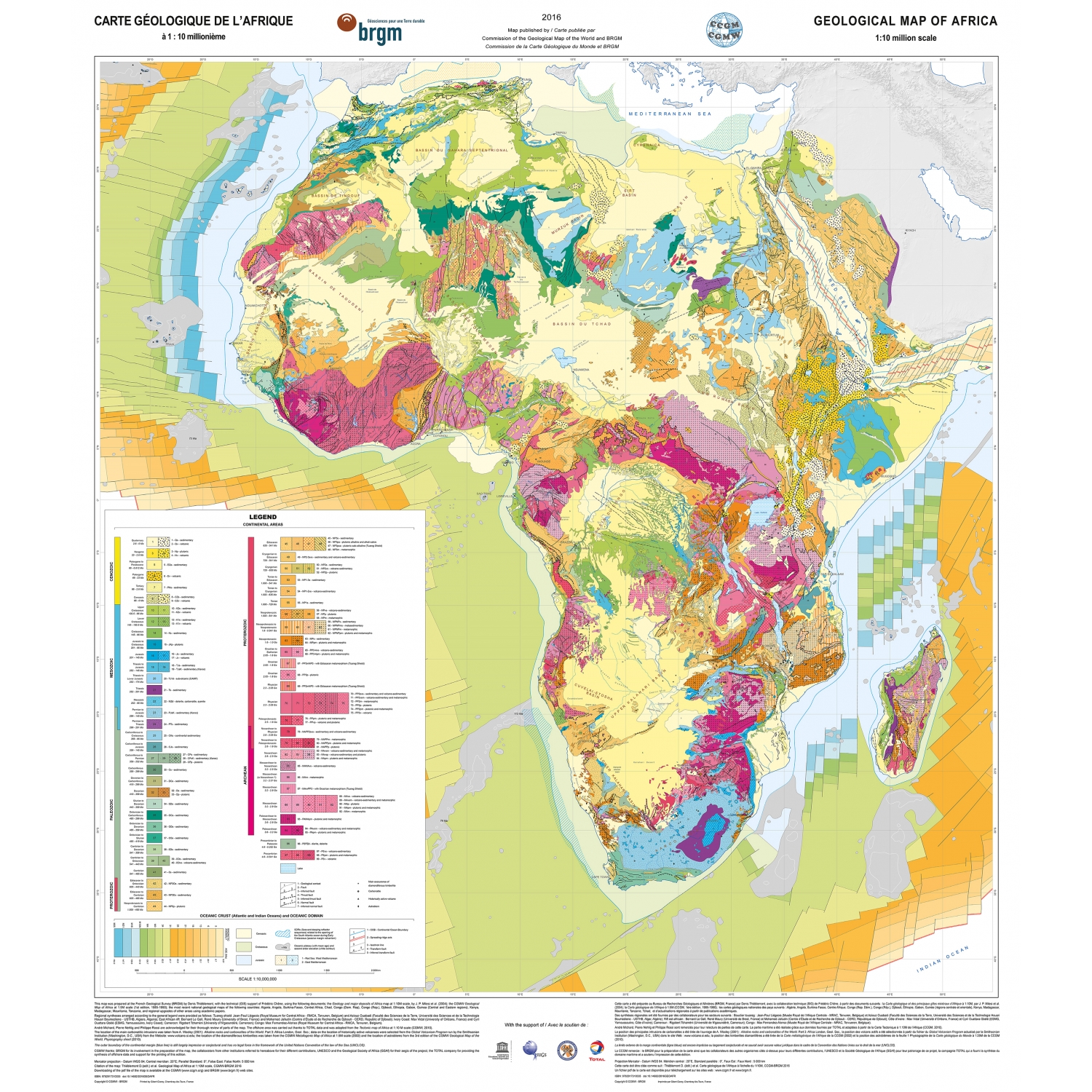This is a very interesting M 6.5 earthquake, which was preceded by a probably unrelated M 5.2 earthquake. Last September, there was an M 5.7 earthquake in Tanzania along the western shores of Lake Victoria. Here is my report for that earthquake.
- Berkely Seismo Lab
- Stephen Hicks
More background on this earthquake can be found here:
Below is my interpretive poster for this earthquake.
I plot the seismicity from the past century, with color representing depth and diameter representing magnitude (see legend). I include the USGS epicenters for earthquakes from 1917-2017 with magnitudes M ≥ 2.5. The M 5.2 earthquake happened in a region that is seismically active and this preceded the M 6.5 earthquake. They are at a large distance and are unlikely related to each other.
I also include the generalized location of the East Africa Rift (EAR) in this region as yellow bands with white dashed lines. These are the Eastern Branch and Southwestern Branch of the EAR.
- I placed a moment tensor / focal mechanism legend on the poster. There is more material from the USGS web sites about moment tensors and focal mechanisms (the beach ball symbols). Both moment tensors and focal mechanisms are solutions to seismologic data that reveal two possible interpretations for fault orientation and sense of motion. One must use other information, like the regional tectonics, to interpret which of the two possibilities is more likely. This earthquake is a normal fault event that strikes to the northwest and dips to the northeast or southwest. Due to the paucity of seismic data and mapped faults here, it is difficult to tell which is the principal fault plane. Someone online suggested that this may not be an earthquake, but an alien invasion force. Just joking. However, it is possible that this might have been an underground explosion. But, at 25 km, this seems highly unlikely.
- I also include the shaking intensity contours on the map. These use the Modified Mercalli Intensity Scale (MMI; see the legend on the map). This is based upon a computer model estimate of ground motions, different from the “Did You Feel It?” estimate of ground motions that is actually based on real observations. The MMI is a qualitative measure of shaking intensity. More on the MMI scale can be found here and here. This is based upon a computer model estimate of ground motions, different from the “Did You Feel It?” estimate of ground motions that is actually based on real observations.
- In the lower right corner I include a geologic map for southern Africa and Botswana (Leseane et al., 2015). Note that the Southwestern Branch of the EAR extends into northwestern Botswana (the white fault lines in the red colored geologic unit). I place a red star in the general location of the M 6.5 earthquake. This earthquake happened in the Kaapvaal Craton, a region of low historical seismicity.
- In the upper right corner I include a map that shows the seismic hazard for the EAR region of Africa (Hayes et al., 2014). Today’s M 6.5 earthquake happened in the lower left corner of the map. I place a red star in the general location of the M 6.5 earthquake. Note that this earthquake happened in a region of low seismic hazard.
- In the upper left corner I include two maps and their associated plots. The map on the left is the shaking intensity map as modeled by the USGS, which uses the MMI scale. The plot below shows the results from the Ground Motion Prediction Equation (GMPE) used to generate the map. This plot shows how ground shaking (MMI) attenuates (diminishes as the seismic waves are absorbed by the earth) with distance from the earthquake. The map on the right is the “Did You Feel It?” map generated by the online responses from people who observed the ground shaking. This also uses the MMI scale. The plot below that shows how the reported observations match the GMPE relations for this earthquake. The GMPE relations are plotted as orange and green lines, which represent GMPE models developed for different geologic settings (e.g. hard rock like granite vs. soft rock like accreted terrane).
- In the lower left corner I include the Rapid Assessment of an Earthquake’s Impact (PAGER) report. More on the PAGER program can be found here. An explanation of a PAGER report can be found here. PAGER reports are modeled estimates of damage. On the top left is a histogram showing estimated casualties and on the top right is an estimate of possible economic losses. There is a list of cities in the lower right corner which shows their populations and the MMI that they were likely exposed to.
I include some inset figures in the poster.
- This is the geologic map from the poster (Leseane et al., 2015). I include their caption below in blockquote.
Precambrian tectonic map of (a) southern Africa and (b) Botswana outlining the spatial extent of Archean cratons and Proterozoic orogenic belts. White lines represent the fault system of the Okavango Rift Zone. Modified after Singletary et al. [2003] and Begg et al. [2009].
- This is the latest geologic maps of Africa (Thieblemont, D., 2016). Click on the map for a 67 MB pdf version.
References:
- Hayes, G.P., Jones, E.S., Stadler, T.J., Barnhart, W.D., McNamara, D.E., Benz, H.M., Furlong, K.P., and Villaseñor, Antonio, 2014, Seismicity of the Earth 1900–2013 East African Rift: U.S. Geological Survey Open-File Report 2010–1083-P, 1 sheet, scale 1:8,500,000 http://dx.doi.org/10.3133/of20101083P
- Leseane, K., Atekwana, E.A., Mickus, K.L., Abdelsalam, M.G., Shemanq, E.M., and Atekwana, E.A., 2015. Thermal perturbations beneath the incipient Okavango Rift Zone, northwest Botswana in JGR: Solid Earth, v. 120, doi:10.1002/2014JB011029.
- Thieblemont, D. (ed.), 2016. Geological Map of Africa et 1:10M scale, CGMW-BRGM 2016



